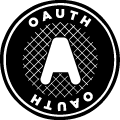 I’m pleased to report that the JSON Web Token (JWT) Best Current Practices (BCP) specification is now technically stable and will shortly be an RFC — an Internet standard. Specifically, it has now progressed to the RFC Editor queue, meaning that the only remaining step before finalization is editorial due diligence. Thus, implementations can now utilize the draft specification with confidence that that breaking changes will not occur as it is finalized.
I’m pleased to report that the JSON Web Token (JWT) Best Current Practices (BCP) specification is now technically stable and will shortly be an RFC — an Internet standard. Specifically, it has now progressed to the RFC Editor queue, meaning that the only remaining step before finalization is editorial due diligence. Thus, implementations can now utilize the draft specification with confidence that that breaking changes will not occur as it is finalized.
The abstract of the specification is:
JSON Web Tokens, also known as JWTs, are URL-safe JSON-based security tokens that contain a set of claims that can be signed and/or encrypted. JWTs are being widely used and deployed as a simple security token format in numerous protocols and applications, both in the area of digital identity, and in other application areas. The goal of this Best Current Practices document is to provide actionable guidance leading to secure implementation and deployment of JWTs.
Thanks to the OAuth working group for completing this important specification.
The specification is available at:
An HTML-formatted version is also available at:

